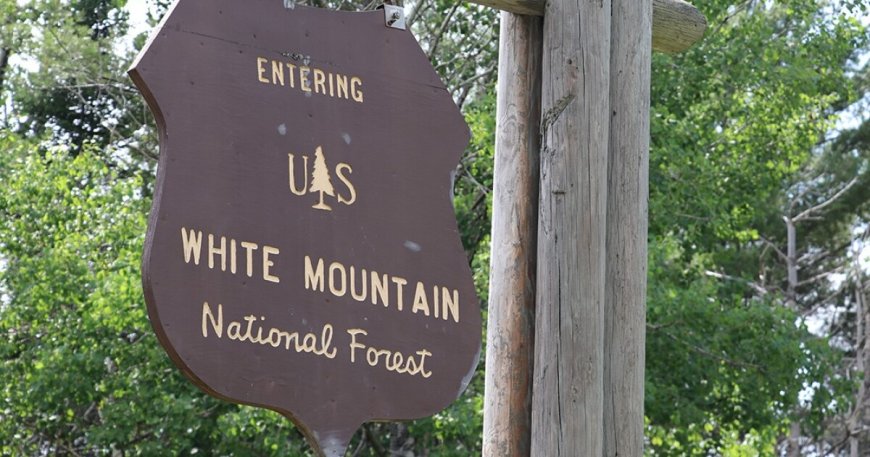Objection period for White Mountain National Forest logging project ends soon
Advocates object to logging in White Mountain National Forest New Hampshire Public Radio

Opponents Object to Logging Project in White Mountain National Forest

Opponents of proposed logging in White Mountain National Forest have their last chance to object to a project in the Sandwich area this week.
People who have already made public comments on the Sandwich project have until April 1 to file an objection with the U.S. Forest Service.
The Sustainable Development Goals (SDGs)
- Goal 15: Life on Land
- Goal 13: Climate Action
Introduction
The Forest Service’s proposal to cut down trees on about 600 acres of land has illuminated different visions for how New Hampshire’s forests should play a role in climate change mitigation.
Environmental Impact Assessment
The agency says the project would provide better habitat diversity for wildlife and continue providing timber products for the economy. Their environmental assessment of the project found it would have “no significant impact” on the environment.
“There’s no profit motive to our projects,” said Jim Innes, a ranger with the Forest Service involved with the Sandwich project. “The primary focus is always on wildlife habitat and then creating conditions where we’ll get a diversity of tree species, which down the road at some point will be harvestable.”
The project is expected to produce about 6 million board feet of timber products.
Opposition and Concerns
Local preservationists and other advocates are pushing back on the plan, saying logging would interrupt recreational activities and release greenhouse gas emissions.
For Maura King, the president of the Wonalancet Preservation Association, the idea of logging in a widely-used recreation area is troubling.
“It is iconic beauty in there,” she said. “You drive on this small road and these mountains just open up from a big open field. You don’t see that much in New Hampshire anymore.”
And, she said, as climate change brings unpredictable and dangerous weather, like flooding, to New Hampshire, forests should be protected to mitigate climate change.
Zack Porter, director of the advocacy group Standing Trees, says limiting timber harvesting and letting New Hampshire’s forests grow old is one way to fight global warming. Standing Trees has also opposed other logging projects in the White Mountains, including one near Gorham and one near Lake Tarleton.
Carbon Sequestration and Climate Change
“If we want to have an impact on carbon and make a global impact locally, one of the best things we can do here in the northeast is keep that carbon in our forests,” he said.
Carbon is the main greenhouse gas that traps heat in the atmosphere, contributing to climate change. Trees and other parts of the forest like soil can store that carbon, keeping it in place so it doesn’t get into the atmosphere. Carbon is released when trees burn or decompose or are logged.
Porter has been advocating for a paradigm shift in how public lands are managed to prioritize the preservation of trees in order to store more carbon. He noted a 2023 study that says reducing timber harvests in middle-aged forests in the Eastern U.S. over the short term – in the next 20 to 40 years – would reduce greenhouse gas emissions. In the long term, things could look different.
Public Concerns and Agency Response
Officials haven’t been responsive to his and others’ concerns about the project, he said.
“The forest has had a chance to take a look at alternatives or different management options,” he said. “And it has refused to offer any significant changes in what it’s proposing to do.”
Innes said the agency had received a lot of public comments, but they weren’t able to use many.
“We got a lot of negative comments. We got some positive ones too. But if it’s just, ‘I don’t like this project,’ that doesn’t give us anything to work with because the public comment period is for us to get information from the public,” he said. “It’s not like a vote.”
| SDGs | Targets | Indicators |
|---|---|---|
| SDG 13: Climate Action | 13.2: Integrate climate change measures into national policies, strategies, and planning. | Number of policies, strategies, and plans that integrate climate change measures. |
| SDG 15: Life on Land | 15.2: Promote the implementation of sustainable management of all types of forests. | Forest area as a proportion of total land area. |
Behold! This splendid article springs forth from the wellspring of knowledge, shaped by a wondrous proprietary AI technology that delved into a vast ocean of data, illuminating the path towards the Sustainable Development Goals. Remember that all rights are reserved by SDG Investors LLC, empowering us to champion progress together.
Source: nhpr.org

Join us, as fellow seekers of change, on a transformative journey at https://sdgtalks.ai/welcome, where you can become a member and actively contribute to shaping a brighter future.







